In the vast tapestry of avian diversity, the Lineated Barbet stands as a captivating enigma often overshadowed by its more flamboyant counterparts.
Yet, within its shy demeanor lies a world of vibrant hues and unique patterns, captivating the hearts of bird enthusiasts worldwide.
Native to the lush forests of Southeast Asia, this elusive bird boasts distinctive features such as a robust body, a sizable head crowned with a heavy bill, and the hallmark lineated plumage in hues of green and red.
Despite its striking appearance, spotting the Lineated Barbet amidst the foliage can be a delightful challenge, as it expertly blends into its arboreal habitat.
Join me on a journey of discovery as we unravel this remarkable species’s intriguing behaviors and hidden wonders.
Stay tuned for a closer look at the fascinating world of the Lineated Barbet!
Physical Characteristics of the Lineated Barbet
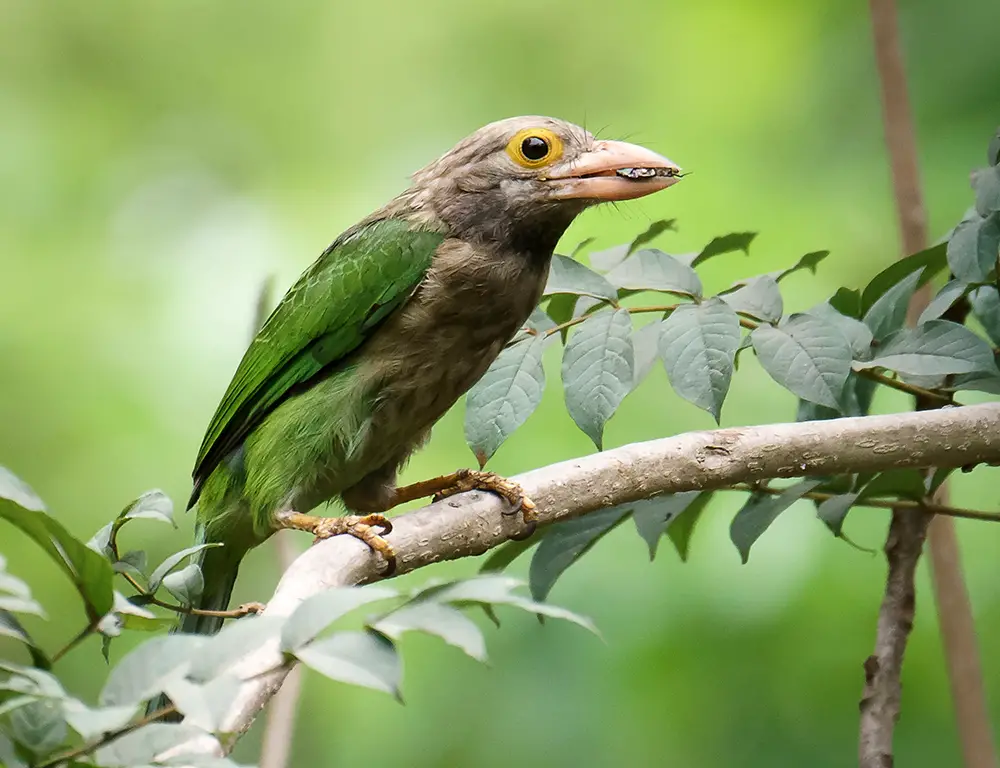
The lineated barbet possesses a fascinating array of physical characteristics that make it a remarkable bird species.
Let’s summarize its key physical traits:
Size
The lineated barbet typically measures 28 and 33 cm in length, with a weight ranging from 192 to 295 grams. This places it at the size of a standard ruler and about as heavy as an average can of soup.
Coloration
Its primary body color is green, aiding in camouflage within leafy environments. It features distinctive lines or ‘bars’ on its face and breast, giving rise to its name. The forehead and throat are adorned with bright red feathers, strikingly contrasting.
Beak
The lineated barbet’s beak is robust and well-suited for its primary diet of fruits and insects, reflecting its adaptation to its feeding habits.
Eyes
The bird’s eyes are captivating, surrounded by patches of naked blue skin. Dark irises give them an intense gaze, contributing to their unique appearance.
Wings
Broad wings with rounded ends facilitate swift flights across canopies, aiding in foraging and navigating their habitat.
Legs and Feet
The lineated barbet has sturdy legs and feet, well adapted for life in trees. They are often found nesting in tree hollows or feeding off tree fruits high up in forests, indicating their specialized adaptation to arboreal habitats.
Habitat and Distribution of the Lineated Barbet
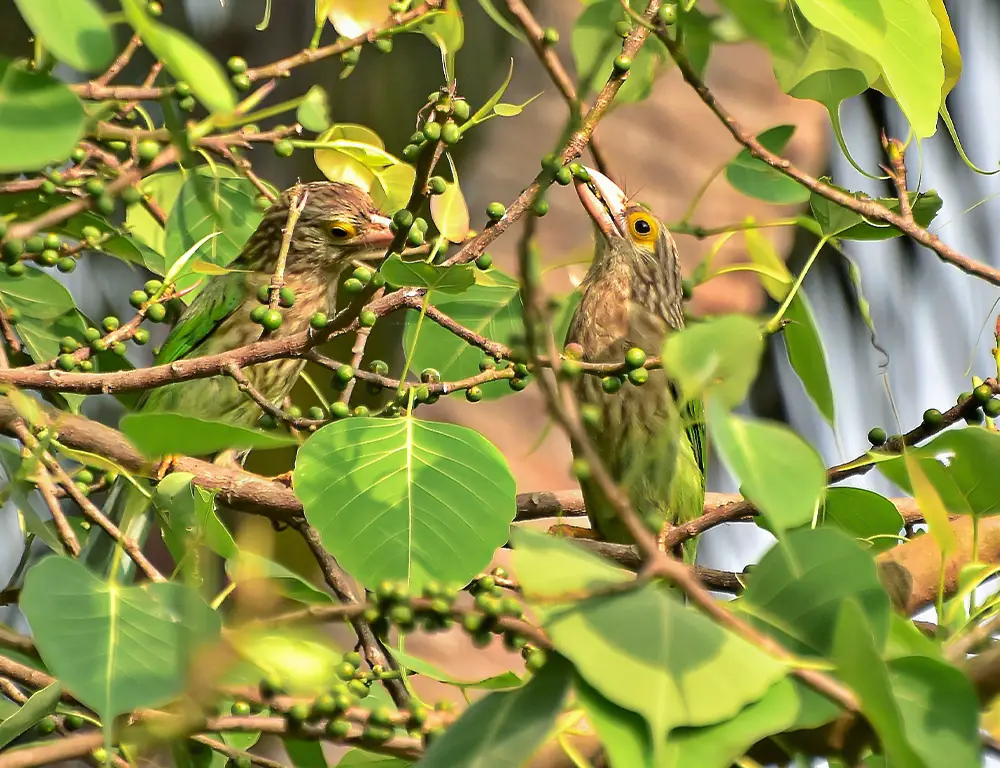
The Lineated Barbet’s habitat and distribution reflect its remarkable adaptability and reliance on specific ecological factors.
Here’s a breakdown of its habitat and distribution patterns based on the provided information:
Range
The Lineated Barbet is primarily found in tropical regions of Asia, including countries such as India, Nepal, Burma, and Thailand.
Habitat Adaptability
These birds exhibit remarkable adaptability to habitats, including dense forests, woodland areas, city parks, and gardens. Urbanization doesn’t deter them, as they are known to nest in tree cavities within bustling cities as comfortably as in rural areas.
Fruiting Trees Availability
The distribution of Lineated Barbets correlates with the availability of fruiting trees, which constitute their primary diet. Higher availability of fruiting trees corresponds to higher populations of Lineated Barbets in a particular area.
Distribution by Country
- India: High availability of fruiting trees corresponds to a high distribution of Lineated Barbets.
- Nepal: Moderate availability of fruiting trees corresponds to a moderate distribution of Lineated Barbets.
- Burma: The low availability of fruiting trees corresponds to a low distribution of Lineated Barbets.
- Thailand: High availability of fruiting trees corresponds to a high distribution of Lineated Barbets.
Non-migratory Behavior
Lineated Barbets are generally non-migratory birds. However, minor shifts in their local distribution may occur during harsh weather conditions or significant changes in food availability.
Fascinating Behavior and Diet of the Lineated Barbet
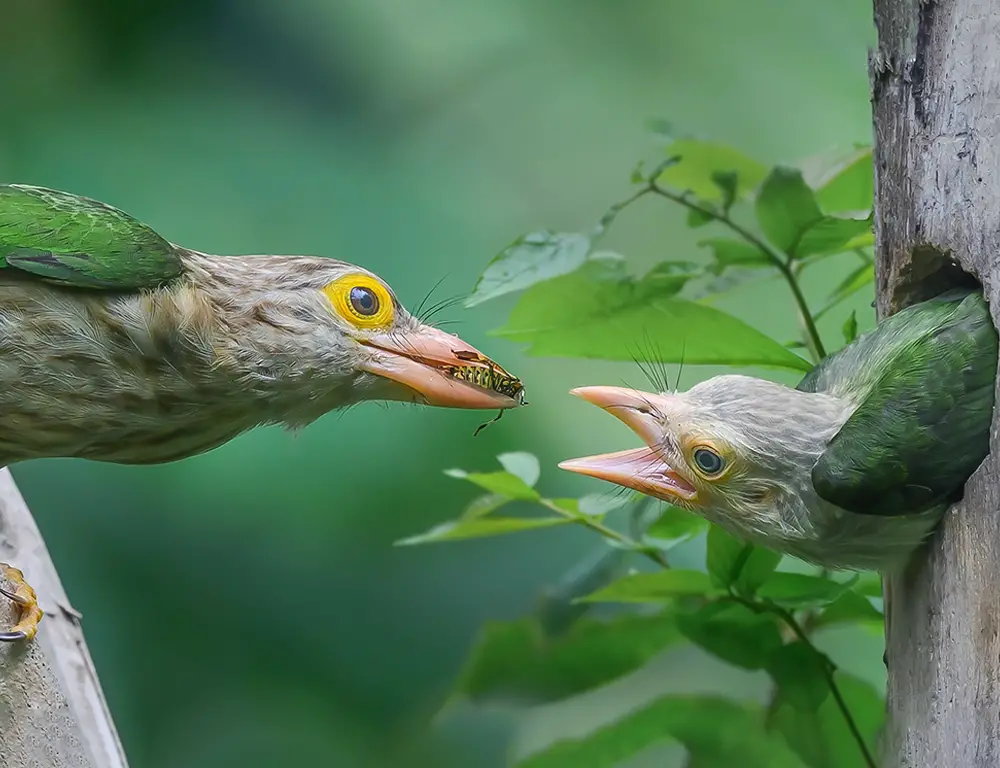
The behavior and diet of the Lineated Barbet offer fascinating insights into their lifestyle and ecological niche. Let’s delve into the key points:
Social Behavior
Lineated Barbets are social birds often found in pairs or small groups. They are not shy of human habitats and can frequently be observed in city parks and gardens.
Breeding Season
The breeding season for Lineated Barbets typically spans from March to July. During this time, their loud calls can be heard from a distance as they engage in courtship displays and nesting activities.
Dietary Preferences
The Lineated Barbet’s diet primarily consists of fruits, including figs, berries, and mangoes. However, they also supplement their diet with insects when the opportunity arises, showcasing their opportunistic feeding behavior.
Foraging Habits
Lineated Barbets are active foragers, particularly during the early morning and late afternoon hours. They can be observed moving along branches for food or using their substantial bills to dig into tree trunks in pursuit of insects.
Reproduction and Lifecycle of the Lineated Barbet
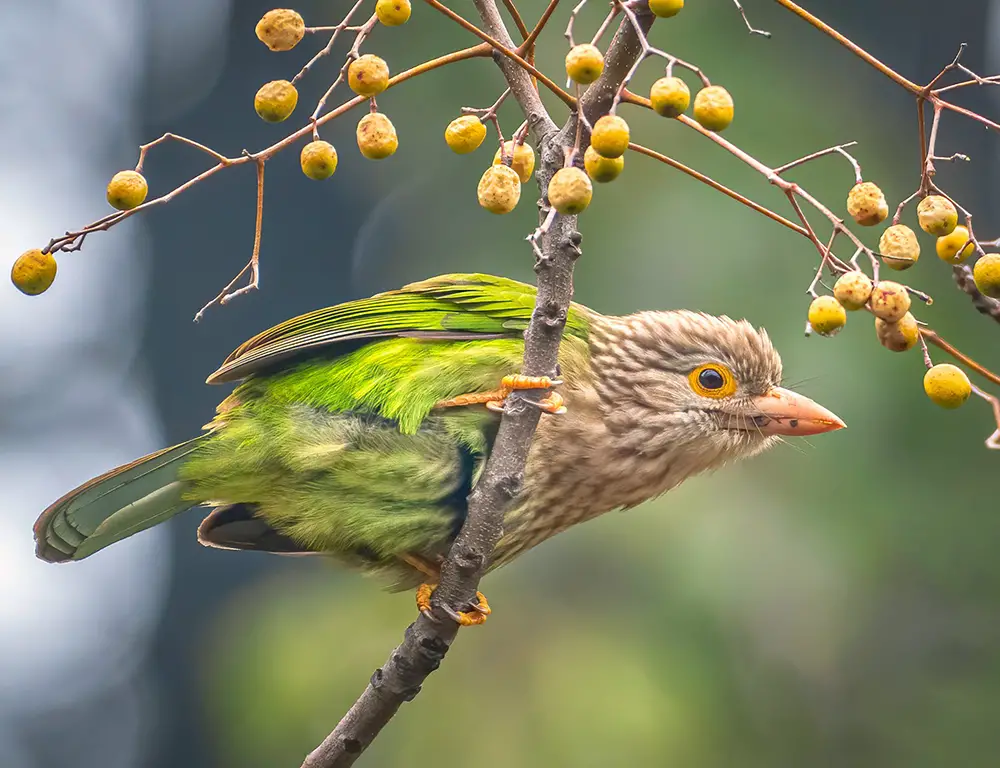
The reproduction and lifecycle of the Lineated Barbet indeed offer a glimpse into the intricacies of avian parenthood and development. Let’s explore the key stages:
Breeding Season
Spring marks the breeding season for Lineated Barbets. During this time, they construct their nests, typically inside tree trunks, where the female lays a clutch of 2 to 4 eggs.
Incubation
The female Lineated Barbet incubates the eggs for approximately two weeks. Both parents take turns caring for the eggs during this period, demonstrating their dedication to parental duties.
Chick Rearing
Once the eggs hatch, it takes about a month for the chicks to develop enough strength and feathers to leave the nest. Throughout this critical phase, both parents tirelessly gather food to feed the hungry chicks from dawn till dusk.
Parental Care
Even after the chicks leave the nest, they continue to be cared for by their parents until they achieve complete independence, which typically takes another month or so. During this time, the parents provide guidance and support as the young birds learn essential survival skills.
Independence
Once fully independent, the young Lineated Barbets begin their journey of growth and exploration. With each passing season, they mature and contribute to the continuation of their species.
Conservation Status of the Lineated Barbet
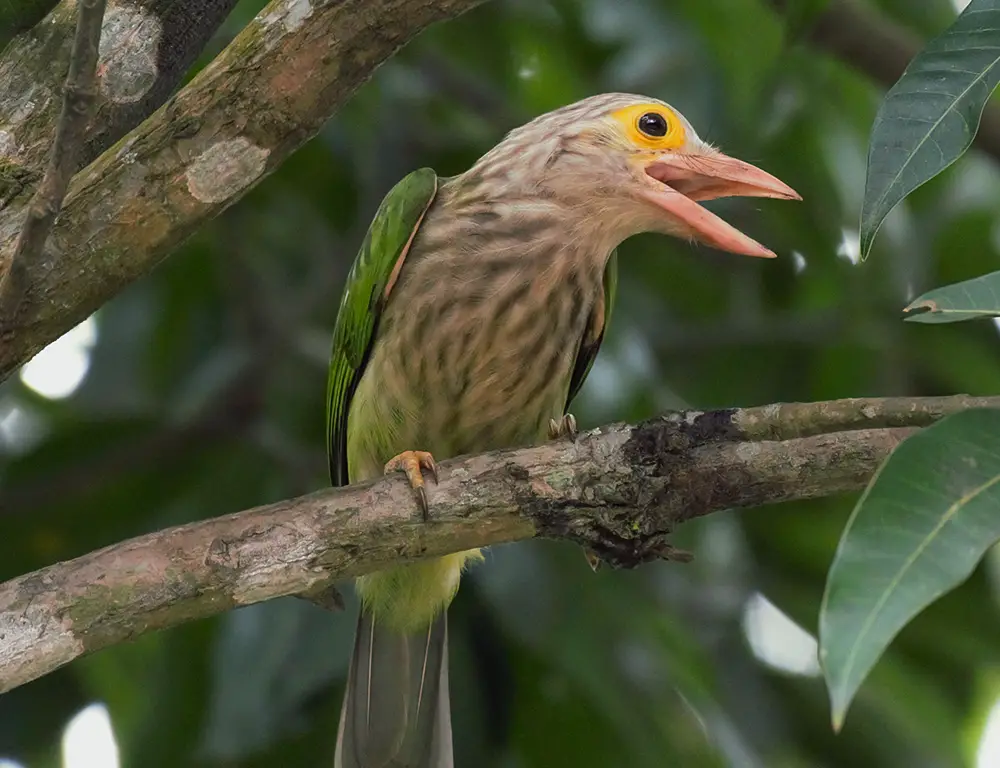
While currently classified as ‘Least Concern’ by the International Union for Conservation of Nature (IUCN), the Lineated Barbet still faces several threats that warrant attention and conservation efforts.
Here’s a summary of its conservation status and the associated threats:
Classification
The Lineated Barbet is categorized as ‘Least Concern’ by the IUCN due to its wide distribution range and relatively stable population trends across South Asia to Southeast Asia.
Threats
- Habitat Loss: Habitat loss, primarily due to deforestation and urbanization, poses a high threat to Lineated Barbets. As their natural habitats are degraded or destroyed, their populations may decline.
- Hunting: While less severe than habitat loss, hunting poses a medium threat to Lineated Barbets, particularly for the pet trade. Illegal hunting and trading of these birds can impact their numbers, especially in areas where enforcement of regulations is weak.
Conservation Efforts
- Legal Protection: In some countries like India, Lineated Barbets are protected under wildlife acts, which prohibit hunting or trading of these birds. Such legal protection is crucial in safeguarding them from exploitation.
- Habitat Preservation: Efforts to preserve and restore their natural habitats are essential for ensuring the long-term survival of Lineated Barbets. Conservation initiatives focusing on habitat protection and restoration can mitigate the impacts of habitat loss.
Enforcement and Awareness
Strict enforcement of regulations against illegal hunting and trading of Lineated Barbets is necessary to combat these threats effectively.
Additionally, raising awareness among local communities and policymakers about the importance of conserving these birds and their habitats can garner support for conservation efforts.
Conclusion
The Lineated Barbet is a captivating example of nature’s resilience and adaptability, thriving across South Asia’s diverse landscapes, including urban environments. Yet, it faces formidable challenges, notably deforestation, which is jeopardizing its habitat and food sources.
Our journey exploring this bird underscores the interconnectedness of biodiversity and the urgent need for conservation action. Focusing on the Lineated Barbet, we illuminate broader environmental issues affecting wildlife and human communities worldwide.
Through concerted research and conservation efforts, we can safeguard not only the survival of this colorful species but also preserve the rich tapestry of avian life for generations to come.
Let us unite in our commitment to protect and cherish these winged wonders, ensuring their presence graces our skies for years to come.